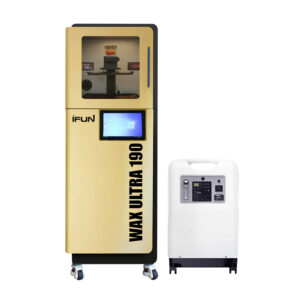3D printing has revolutionized manufacturing, prototyping, and hobbyist projects. However, to achieve optimal results, running a 3D printer test is crucial. Testing ensures that your printer operates at its best, delivering high-quality prints consistently. In this guide, we’ll explore the various types of 3D printer test prints, their purposes, and how they can help fine-tune your machine.

Why 3D Printer Testing Matters
Performing a 3D printer test is not a one-time activity but an ongoing process to evaluate and optimize your printer’s performance. Whether you’re a beginner or an experienced user, running test prints for 3D printers helps diagnose issues like poor layer adhesion, warping, or inconsistent extrusion. Conducting regular 3D printer testing ensures that your printer is always calibrated and ready for precise printing.
Key Types of 3D Printer Test Prints
1. Calibration Cube (3D Printer Test Cube)
The calibration cube is one of the most common 3D printer test prints. It helps check the dimensional accuracy of your printer. By measuring the cube with calipers, you can determine if your printer is correctly calibrated along the X, Y, and Z axes. This is a crucial step in any 3D printer calibration test to ensure accuracy.
2. Overhang Test (3D Printer Overhang Test)
Overhangs challenge many 3D printers. Running an overhang test evaluates how well your printer handles angles without support structures. If your printer struggles, adjustments to cooling settings or print speeds may be required.
3. Tolerance Test (3D Printer Tolerance Test)
A tolerance test checks how well your printer can handle small gaps and moving parts. This is crucial for functional prints where precision is necessary. Running a 3D printer test for tolerance helps determine the minimum clearance required for parts to move smoothly.
4. Retraction Test (3D Print Retraction Test)
Retraction settings prevent stringing between parts of a print. A retraction test fine-tunes this setting by printing a model with multiple small gaps. If stringing occurs, you may need to adjust the retraction distance or speed.
5. Temperature Tower (3D Printer Calibration Test)
Different materials require different temperatures. A temperature tower test helps determine the best printing temperature for each material by evaluating different sections printed at varying temperatures.
6. All-in-One Test (Comprehensive 3D Printer Test Print)
An all-in-one test combines multiple challenges into a single print, including overhangs, bridges, small details, and tolerance tests. It provides a complete evaluation of your printer’s overall performance.
| Test Type | Purpose |
| Calibration Cube | Checks dimensional accuracy |
| Overhang Test | Evaluates overhang performance |
| Tolerance Test | Tests precision for moving parts |
| Retraction Test | Reduces stringing between printed parts |
| Temperature Tower | Identifies optimal printing temperature |
| All-in-One Test | Comprehensive test covering multiple factors |
How to Conduct a 3D Printer Test
- Choose the Right Test Model
Select a test print for 3D printers that aligns with your goals. For overhang testing, choose an overhang test; for dimensional accuracy, a 3D printer test cube is ideal.
- Prepare Your Printer
Ensure proper calibration before running a 3D printer test. Check bed leveling, nozzle height, and filament loading to avoid common printing issues.
- Run the Test Print
Load the test model into your slicing software and start the print. Monitor the process closely, particularly the first few layers.
- Analyze the Results
After the print is complete, examine it for defects. Use calipers to check dimensional accuracy and visually inspect for stringing, warping, or poor adhesion.
- Adjust and Repeat
Make necessary adjustments based on the test results, tweaking temperatures, print speeds, or retraction settings. Repeat the 3D printer test print until the desired quality is achieved.
Benefits of Regular 3D Printer Testing
- Enhanced Print Quality: Regular 3D printer testing helps diagnose and correct print issues.
- Material Optimization: Running 3D print test prints helps identify the best settings for different filaments.
- Time and Cost Savings: Avoid failed prints and wasted material with accurate 3D printer test procedures.
- Improved User Experience: A well-calibrated printer enhances the overall 3D printing workflow.
The necessity of 3D printer testing
A 3D printer test is an essential part of the 3D printing process. Whether running a 3D printer test cube, an overhang test, or an all-in-one calibration test, regular assessments help optimize your machine’s performance. By incorporating these 3D printer tests into your workflow, you ensure consistent, high-quality prints every time.
Don’t skip test prints for 3D printers—they are a vital step in achieving professional-grade results. Happy printing!

